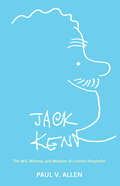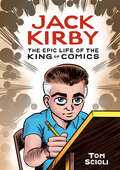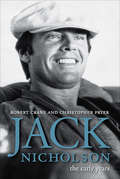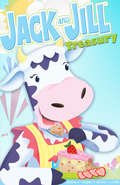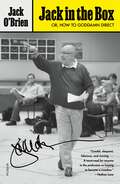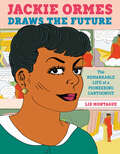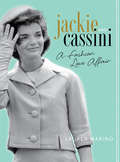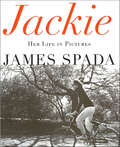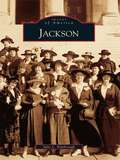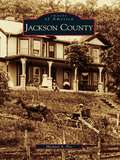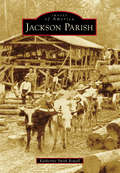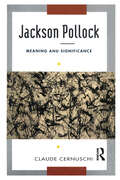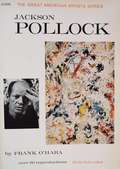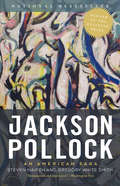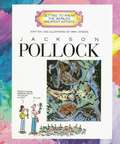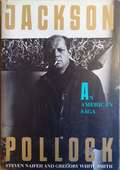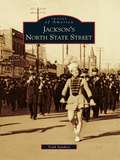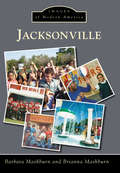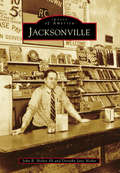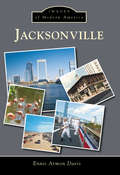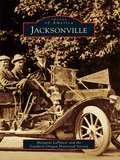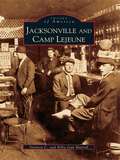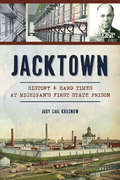- Table View
- List View
Jack Kent: The Wit, Whimsy, and Wisdom of a Comic Storyteller
by Paul V. AllenJack Kent (1920–1985) had two distinct and successful careers: newspaper cartoonist and author of children’s books. For each of these he drew upon different aspects of his personality and life experiences. From 1950 to 1965 he wrote and drew King Aroo, a nationally syndicated comic strip beloved by fans for its combination of absurdity, fantasy, wordplay, and wit. The strip’s DNA was comprised of things Kent loved—fairytales, nursery rhymes, vaudeville, Krazy Kat, foreign languages, and puns. In 1968, he published his first children’s book, Just Only John, and began a career in kids’ books that would result in over sixty published works, among them such classics as The Fat Cat and There’s No Such Thing as a Dragon. Kent’s stories for children were funny but often arose from the dark parts of his life—an itinerant childhood, an unfinished education, two harrowing tours of duty in World War II, and a persistent lack of confidence—and tackled such themes as rejection, isolation, self-doubt, and the desire for transformation.Jack Kent: The Wit, Whimsy, and Wisdom of a Comic Storyteller illuminates how Kent’s life experiences informed his art and his storytelling in both King Aroo and his children’s books. Paul V. Allen draws from archival research, brand-new interviews, and in-depth examinations of Kent’s work. Also included are many King Aroo comic strips that have never been reprinted in book form.
Jack Kirby: The Epic Life of the King of Comics [A Graphic Biography]
by Tom ScioliTold in vivid graphic novel form by a groundbreaking Eisner-nominated comics creator, the long-overdue biography of the legend who co-created Captain America, Iron Man, Black Panther, the Fantastic Four, the X-Men, and many more superhero favorites.&“A fast-paced celebration of an underheralded legend within the comic-book industry.&”—Kirkus ReviewsNAMED ONE OF THE BEST BOOKS OF THE YEAR BY LIBRARY JOURNALThis sweeping, full-color comic book biography tells the complete life story of Jack Kirby, co-creator of some of the most enduring superheroes and villains of the twentieth century for Marvel Comics, DC Comics, and more. Critically acclaimed graphic novelist Tom Scioli breathes visual life into Kirby's life story--from his days growing up in New York during the Great Depression and discovering a love for science fiction and cartoons to his time on the frontlines in the European theatre of World War II where he experienced the type of action and adventure he'd later imbue his comic pages with, and on to his world-changing collaborations at Marvel with Stan Lee, where the pair redefined comics as a part of pop culture.Just as every great superhero needs a villain to overcome, Kirby's story also includes his struggles to receive the recognition and compensation that he believed his work deserved. Scioli captures his moves from Marvel to DC and back again, showing how Kirby himself and later his family fought to preserve his artistic legacy.Drawn from an unparalleled imagination and a life as exciting as his comic book tales, Kirby's super-creations have influenced subsequent generations of creatives in the comics field and beyond. Now, readers can experience the life and times of a comics titan through the medium that made him famous.
Jack Nicholson: The Early Years (Screen Classics)
by Robert Crane Christopher FryerA biography based on personal interviews with the actor as well as his friends and fellow filmmakers: &“Entertaining . . . A must for cinema students.&” ―Hollywood Reporter In 1975, Jack Nicholson was just becoming a household name after starring in, writing, or producing twenty-five films including Easy Rider, Five Easy Pieces, The Last Detail, and Chinatown. At the time, Robert Crane and Christopher Fryer interviewed Nicholson for what began as a thesis for a University of Southern California film class—but quickly morphed into a larger portrait of Nicholson&’s unique craft. It would become the first book about the icon, and the only one done with his participation. Crane and Fryer conducted their interviews with Nicholson with the intent of showcasing the young star as he saw himself, while also interviewing many of Nicholson&’s close friends and fellow filmmakers, including Dennis Hopper, Roger Corman, Hal Ashby, Ann-Margret, Robert Evans, and Bruce Dern, providing a comprehensive profile of the actor's early years in the industry. The result is a unique portrait of the life and career of a man who has to date earned three Academy Awards and twelve nominations, seven Golden Globes, and the American Film Institute&’s Life Achievement Award. &“A true insider&’s look at Nicholson not only as a writer, director, and actor, but also as a private man who desires a private life.&” ―Los Angeles Daily News Includes photographs Originally published as Jack Nicholson: Face to Face
Jack and Jill Treasury
by Davis DoiThe best from the pages of the Jack and Jill family of magazines--Jack and Jill, Humpty Dumpty and Turtle--featuring stories, poems, crafts, and recipes, all celebrating the spring season.
Jack in the Box: or, How to Goddamn Direct
by Jack O'BrienThe Tony Award–winning director gathers memories of people, productions, and problems surmounted from his fifty-year career in this one-of-a-kind how-to handbook.What do directors do? Jack O’Brien, the winner of Tony and Drama Desk Awards and the former artistic director of San Diego’s historic Old Globe theatre, describes it like this: “You stand before a situation in which something is presented to you. You’re afforded a challenge. Like catching an enormous ball. And you respond. You come up with a vision of some kind. That is, if you respond to the material at all, and one must, or it’s doomed. You sort of feel that since you relate to the material at hand, you might as well try to be helpful.”In Jack in the Box, O’Brien’s follow-up to his memoir Jack Be Nimble, the director collects stories from the many productions he has worked on, the great talents he encountered and collaborated with (including Tom Stoppard, Mike Nichols, Jerry Lewis, Marsha Mason, and many others), and the choices he made, on the stage and off, that have come to define his career. With humor, warmth, and contagious excitement, O’Brien takes the reader by the shoulder, pulls them in, and tells them how to become a director—or, at the very least, relates an unfailingly honest story of how he did.
Jackie Ormes Draws the Future: The Remarkable Life of a Pioneering Cartoonist
by Liz MontagueA stirring picture-book biography about Jackie Ormes, the first Black female cartoonist in America, whose remarkable life and work inspire countless artists today. <p><p> Zelda Jackson—or Jackie—was born in Pittsburgh on August 1, 1911, and discovered early on that she could draw any adventure. A field she could run through as far as her hand could draw. An ocean she could color as blue as she liked. As she grew, Jackie put her artistic talents to use, doodling and chronicling daily life for her high school yearbook. But she was already dreaming of bigger things. <p><p> Jackie would go on to create bold and witty cartoon characters—Torchy Brown, Candy, Patty-Jo ‘n’ Ginger—who entertained readers of African American newspapers like the Pittsburgh Courier and the Chicago Defender. She tackled racism, pollution, and social justice—and made the world listen. Jackie was the first Black female American cartoonist, but she would not be the last. <p><p> Author Liz Montague, one of the first Black cartoonists at the New Yorker, carries Jackie’s indelible legacy forward in vibrant text and evocative cartoons.
Jackie and Cassini: A Fashion Love Affair
by Lauren MarinoAs the glamorous Kennedys took the White House in 1961, Jackie appointed famed designer- and family friend-Oleg Cassini, as her personal "Secretary of Style.” From classic pillbox hats to casually elegant daywear and empire dresses, Cassini created an enduring look for the stylish Mrs. Kennedy, and she became a fashion muse for the ages.Meanwhile, women across the country enthusiastically copied her look-one that endures today and that transformed Jackie into one of the most beloved style icons of all time. Jackie and Cassini showcases the fashions and details the collaborations of an extraordinary teaming of designer and muse.
Jackie: Her Life in Pictures
by James SpadaFrom the New York Times–bestselling author: “These 251 black and white photos capture her well-lived, much-photographed life in adoring detail.” —Publishers WeeklyA legendary life shown in rare, mostly never before published photographs. Arguably the most famous woman of the twentieth century, certainly one of its most photographed, Jacqueline Bouvier Kennedy Onassis lived an astonishing life; her popularity and the fascination she held for people the world over during her nearly sixty years in the spotlight can hardly be overestimated. And while that has led to a number of books about her, none has told her life story in the way this one does—entirely in photographs, from birth to death, with lively, anecdotal extended captions.Of the 251 photographs in Jackie: Her Life in Pictures, 165 have never been published, 58 have rarely been published (in newspapers or magazines but never in book form), and 28 are inescapable images that have been seared into the memories of everyone. Together with the text by James Spada that runs alongside them, these pictures tell the story of an American life that became legendary even while it was being lived, a story that will speak afresh to the hearts of all Americans.“In this sophisticated, beautifully produced work, he has chosen to let the photos of Jackie do all the talking. And she tells everything, with the help of his insightful and detailed captions to help propel the story . . . Spada has much to be proud of.” —The Austin Chronicle“This cradle-to-grave retrospective of one of the 20th century's most public lives does justice to its subject as well as its readers.” —The Advocate
Jackson
by Julie L. KimbroughJackson celebrates the history of Mississippi's capital city with more than 200 photographs from the Mississippi Department of Archives and History, the National Archives, and university collections. From its start as a settlement on LeFleur's Bluff overlooking the Pearl River to its present-day position as one of the leading cities of the New South, Jackson's history is one of change, colorful characters, and a uniquely Southern atmosphere. Beginning with a tour of one of the city's oldest and best-known streets, Jackson features the work of outstanding local photographers and combines detailed historical narratives with entertaining stories about ordinary Jacksonians. From the club president who saved a magnolia tree by staging a protest in its branches to the photographer who opened his first studio in a tent, this compelling visual history revisits familiar landmarks and people from Jackson's past.
Jackson County (Images of America)
by Michael PoeOn October 28, 1770, George Washington entered present-day Jackson County by traveling south down the Ohio River. The Sachem tribe camped with Washington's party and expressed a desire to barter with the Virginia traders. Washington made extensive notes of the terrain, animals, and timber. By 1772, Washington had patents on more than 6,800 acres in Jackson County. This led to the Ohio River being the source of trade, entertainment, and survival early in the history of Jackson County. Named after the seventh president of the United States, Andrew Jackson, Jackson County was established by an act of the Virginia General Assembly on March 1, 1831, out of parts of Mason, Kanawha, and Wood Counties. The terrain is sandy with fertile bottomlands along the Ohio River and gently rolling hills toward the east. Ripley is the county seat, situated in the central part of the county, and is named in honor of Harry Ripley, who drowned in Big Mill Creek in 1830.
Jackson Parish
by Katherine Smith RowellJackson Parish was formed in 1845, and settlers traversed treacherous territories, thick brush, and waterways to take advantage of cheap government land. The pioneers--mostly farmers--transformed a vastly forested area into several thriving communities. The Tremont Lumber Company founded the mill towns of Eros and Chatham in the early 20th century. Simultaneously, the Arkansas Southern Railroad's arrival brought settlements to Quitman and Ansley. In 1903, Jonesboro was officially declared a town after it reached 1,000 residents; eight years later, it claimed the parish seat from Vernon, which had held that title since 1846. A new courthouse was built in Jonesboro the following year. Weston, Stovall, Walker, and Midway provided churches and schools for a growing population. Hodge staked claim in the paper and packaging industries by the 1920s, and the 1940 song "You Are My Sunshine" by Jimmie Davis, a Beech Springs native and Louisiana's "Singing Governor," forever changed the way Jackson Parish would be remembered. These memories, and more, are chronicled in Images of America: Jackson Parish.
Jackson Pollack: Meaning And Significance
by Claude CernuschiDesigned to help students and interested general readers to interpret the abstract expressionist paintings of Jackson Pollock, this survey of Pollock's life and art provides insight into the origins and meanings of individual works and analyzes the influences upon Pollock. Also included are discussions of the many issues raised by Pollock's work above and beyond his intentions, and how they intersected with the work of his contemporaries as well as other intellectual currents of the time.
Jackson Pollock
by Frank O’haraThis slim, but richly illustrated, biography of Jackson Pollock has stood the test of time since its first publication in 1959. Still a sound, but laudatory, study of all of Pollock's periods; which are weighed and appreciated in chronological order. Frank O'Hara was a well-known and universally respected poet who was an integral part of the New York artistic scene until his death in 1966.
Jackson Pollock
by Steven Naifeh Gregory White SmithJackson Pollock was more than a great artist, he was a creative force of nature. He changed not only the course of Western art, but our very definition of "art. " He was the quintessential tortured genius, an American Vincent van Gogh, cut from the same unconforming cloth as his contemporaries Ernest Hemingway and James Dean--and tormented by the same demons; a "cowboy artist" who rose from obscurity to take his place among the titans of modern art, and whose paintings now command millions of dollars. Here, for the first time, is the life behind that extraordinary achievement--the disjointed childhood, the sibling rivalry, the sexual ambiguity, and the artistic frustration out of which both artist and art developed. Based on more than 2,000 interviews with 850 people, Jackson Pollock is the first book to explore the life of a great artist with the psychological depth that marks the best biographies of literary and political figures. In eight years of research the authors have uncovered previously unknown letters and documents, gained access to medical and psychiatric records, and interviewed scores of the artist's friends and acquaintances whose stories had never been told. They were also the first biographers in twenty years to benefit from the cooperation of Pollock's widow, Lee Krasner. The results of these unprecedented efforts lie before you: a rich, sprawling, landmark biography of one of the most compelling figures in all of American culture; a brilliant, explosive "portrait of the artist," intimately detailed, abundantly illustrated (with more than 200 photographs from Pollock's life and work, many of them never before published), and filled with new information and new insights. In a style as richly textured, engrossing, and poignant as the best of contemporary literature, Steven Naifeh and Gregory White Smith give us the family crucible out of which the artist and his art emerged. Beginning with Jackson's birth on a sheep ranch in Wyoming, we follow the Pollock family on a relentless trek across the American West, as their dreams of a better life somewhere else are repeatedly frustrated. We see the young Jack Pollock as a struggling art student in New York, escaping into drunken rages or throwing himself into the Hudson River in one of several attempts at suicide. Later, we see Pollock, by turns, gently affectionate and outrageously cruel, creatively bankrupt and heroically productive. We see him alternately fascinated and intimidated by his contemporaries: Clement Greenberg, Franz Kline, Willem de Kooning, Robert Motherwell, Barnett Newman, Harold Rosenberg, Clyfford Still, Tennessee Williams. We see him enter into a tumultuous marriage with the painter Lee Krasner, creating a powerful alliance that will lead first to triumph, then to decline, and finally to death when, with his mistress at his side, Pollock smashes his car into a tree. But Jackson Pollock is more than the epic story of a tormented man and his sublime art, it is also a compulsively readable, sweeping saga of America's cultural coming of age. From frontier Iowa to the dust bowl of Arizona, from the twilight of the Wild West to the desolation of Depression-era New York, from the excitement and experimentation of the Mexican muralists to the fanfare of the Surrealists' visit to America, from the arts projects of the WPA to the explosion of interest and money that marked the beginning of the modern art world, Pollock's story unfolds against the dramatic landscape of American history. Here then is a definitive record of the journey of an artist, filled with piercing psychological insights, that brings us to a truer understanding of the power and pathos of creative genius. "Monumental and impressive. " "Washington Post" "For once, with this intense, engrossing, and indeed brilliant work, we have a biography that justifies its length. Seldom have the history of an artist,"
Jackson Pollock (Getting to Know the World's Greatest Artists)
by Mike VeneziaRecounts the artist's childhood and education, describes influences on his work, and looks at several of his major paintings
Jackson Pollock: An American Saga
by Gregory W. Smith Steven W. NaifehBased on family letters and documents, lengthy interviews with his widow, Lee Krasner, as well as his psychologists and psychoanalysts, this book explodes the myths surrounding his death in 1956. <P><P> Pulitzer Prize Winner
Jackson's North State Street (Images of America)
by Todd SandersSince the mid-19th and early 20th centuries, Jackson's North State Street has been home to some of the capital city's major architectural landmarks. North State Street was bordered by stately homes of many different styles and periods, from rather simple antebellum cottages, to grand Greek Revival, elaborate Queen Anne, and elegant Colonial Revival and neoclassical mansions, as well as impressive institutional buildings and churches. However, beginning in the early years of the Great Depression, many of these stately homes and buildings were lost, replaced by apartments, parking lots, and commercial buildings. Through the images in this book, those who never witnessed first hand the majesty of Jackson's North State Street will be able to gain some insight into what has been lost and truly appreciate what remains. For those who remember what North State Street was, this book will be a chance to revisit and reminisce about that lost era.
Jacksonville
by Barbara Mashburn Brianna MashburnRecognized throughout the state as Arkansas's fastest-growing city, Jacksonville evolved from a settlement surrounding the railroad depot, eventually incorporating as a town in 1941. The population soared when the exceedingly large ordnance plant was built during World War II. The plant's footprint included much of present-day Jacksonville and employed upwards of 20,000 people. The migration northward from larger cities to this bustling suburban town has created an astounding contemporary history. With the advent of the nuclear age in 1955, Jacksonville took its place as a member of the Strategic Air Command family with its neighbor, the Little Rock Air Force Base. This book presents the town's history from the 1960s forward and showcases local accomplishments from the last 50 years.
Jacksonville
by Dorothy Jane Nisbet John B. Nisbet IIIKnown as the "Gem of the Hills," Jacksonville is situated in the foothills of the Appalachian Mountains. After Andrew Jackson's victory over the Creek Indians in 1813-1814 and his negotiation of a treaty with the Creeks in 1832, this land was available for purchase from the Creek Indians as well as the US government. Several buildings on the town's central square predate the Civil War, and numerous antebellum houses and churches remain. Famous Civil War figures, including John Pelham and Gens. William and John Forney, came from Jacksonville. During the 20th century, a large cotton mill provided employment for the town's citizens and the starving sharecroppers from the surrounding mountains. What began as the State Normal School evolved into what is now Jacksonville State University.
Jacksonville
by Ennis Armon DavisThis book explores Jacksonville's transformation into the largest city (by land area) in the contiguous United States with images of significant events in its history. Like many of the country's older cities, Jacksonville suffered from the negative impacts of rapid urban sprawl after World War II. Amid a declining tax base, public schools losing their accreditation, and government corruption scandals, Jacksonville voters approved a referendum to consolidate the struggling city with Duval County to create the "Bold New City of the South." These changes, along with many others, have continued to guide this Southern metropolis into the 21st century.
Jacksonville
by Southern Oregon Historical Society Margaret LaplanteIt was the winter of 1851-1852 when the word "gold" echoed throughout the valley. Soon hundreds of gold miners flocked to Table Rock City, later renamed Jacksonville. In short order, families arrived and took out donation land claims and began farming, raising stock, and opening businesses. Many had already emmigrated from Europe, Canada, Ireland, and England. Jacksonville had its own Chinatown that was home to the many Chinese who had traveled far seeking their fortune through gold mining. When the railroad bypassed Jacksonville in 1883 in favor of the new town of Middleford, later renamed Medford, Jacksonville's fortunes reversed. During the ensuing decades, the town's buildings fell into disrepair. The threat of bulldozers leveling the downtown core in the late 1960s brought out a renewed interest in preservation. Today Jacksonville is a National Historic Landmark District and looks much as it did 150 years ago.
Jacksonville Food Trucks: Stories & Recipes from the Road (American Palate)
by Nancy WhiteFood trucks in Jacksonville are a smashing success. The early popularity of trucks like Corner Taco and On the Fly set the stage for a mobile dining revolution. Innovators such as Mike Field and Jax Truckies supplied the vision and passionately advocated for the cause. From Beer Cheese Soup to Chicken Madras, the astounding variety of menus, themes and trucks means there's something for all locals to enjoy. Author and "Nourish the Beast" blogger Nancy White includes fascinating stories and mouth-watering recipes as she chronicles the rise of food trucks on Florida's First Coast.
Jacksonville and Camp Lejeune
by Stratton C. Murrell Jean MurrellLocated near the North Carolina coast on the New River, Jacksonville is home to the U.S. Marine Corps Base Camp Lejeune. From the beginning, the people of Jacksonville have faced challenges brought on by the winds of nature and the winds of war in a poised and dignified manner, turning hardships to the betterment of the community. Such changes have encouraged population and tourist growth, as well as physical expansion of the city, thus creating a booming area that still manages to maintain the charm and hospitality of a small Southern town. Jacksonville and Camp Lejeune revisits the era when Jacksonville was just a fledgling community, when tobacco barns and warehouses dotted the landscape and ferries and fishing boats forged the New River. The townspeople looked to agriculture, shipping, naval stores, lumbering, hunting, fishing, and political involvement to occupy their interests and energies, while hurricanes and wars loomed in the world beyond. Few people in those times could have imagined that a hurricane would make Jacksonville the county seat of Onslow County or that the world at war would result in the population expansion of the 1940s and the 1950s. With the building of the Marine base, which brought about enormous social change for the residents, the city attracted construction workers, young families, and service men and women who paved the way for today's "rural metropolis."
Jacktown: History & Hard Times at Michigan’s First State Prison (Landmarks)
by Judy Gail KrasnowCompeting with the likes of Detroit and Ann Arbor, Jackson won the battle to build Michigan’s first state prison in 1838. During the era of the “Big House” and industrial growth, the penitentiary’s on-site factories and cheap inmate labor helped Jackson become a thriving manufacturing city. In contrast to Jacktown’s beautiful Greco-Roman exterior, medieval punishments, a strict code of silence, no heat, no electricity and a lack of plumbing defined life on the inside. Author Judy Gail Krasnow shares the incredible stories of life at Jacktown, replete with sadistic wardens, crafty escapees, Prohibition’s Purple Gang, a chaplain who ran a brothel and influential reformers.
Jacob Elordi: Issue #6 (Scoop! The Unauthorized Biography #6)
by C. H. MitfordIntroducing a new series of unauthorized biographies on the world's biggest names and rising stars in entertainment, sports, and pop culture! Complete with quizzes, listicles, trivia, and a full-color pull-out poster of the star, this is the definitive collection to get the full Scoop! and more on your favorite celebrities.Jacob Elordi is on his way to superstar status:From his breakout role as Noah in The Kissing Booth to his steamy HBO debut in Euphoria followed by an ad campaign for Calvin Klein underwear, things are really starting to heat up for this Aussie actor. But what's next?Get the full Scoop! and more on Jacob Elordi, Hollywood's next heartthrob.
